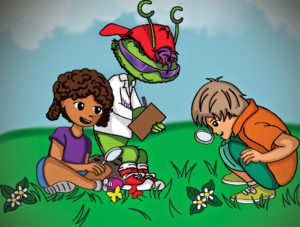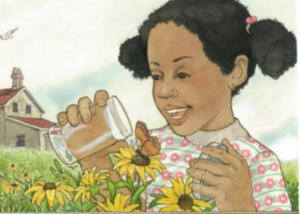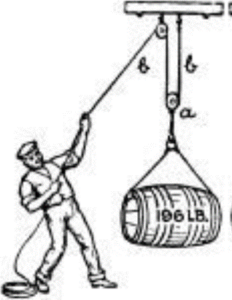Lesson 1 – Children and Science

-
Why is the sky blue?
-
How do plants grow?
-
Why do things fall to the ground?
-
Why is there rainbow?
-
Does rain come from the sky?
Children ask their parents and teachers hundreds of questions like the above. We use science to answer these questions. Being “scientific” involves being curious, observing, asking how things happen and learning how to find the answers. Aristotle stated that “All men (including women) by nature desire to know”. This desire to know is not limited to adults. Curiosity is natural to children, but they need help understanding how to make sense of what they see and to relate their observations to their existing ideas and understandings. That is why it is important to teach science and children to ask questions, make predictions, offer explanations and explore in a safe environment.
What is Science?
Science is not just a collection of facts. Of course, facts are an important part of science. For example, water freezes at 0 degrees Celsius, and the earth moves around the sun. But science is much, much more. Science may be thought of as comprising TWO components: (Zimmerman, 2000).
-
Scientific Knowledge – refers to the concepts and principles in biology, chemistry, physics, earth science and so forth
-
Science Process Skills – science process skills form the foundation for scientific investigations. The key science process skills are Observation, Communication, Classification, Measurement, Inference and Prediction
Why Learn Science?

1) Children Have a Natural Desire to Know
Children are by nature inquisitive, curious, and playful creatures with an intrinsic desire to know. You see them running after butterflies and picking seeds in the park and collecting shells at the beach. Children may loose this sense of wonder if they are not continuously nurtured.
2) Developing Positive Attitudes Towards Science
Children are naturally disposed to explore the world around them and exposing them to science activities might enhance their interest in science. A positive attitude towards science may encourage them to enroll in STEM subjects later in secondary school and college.

3) Exposure to Science Helps Children Understand the Surroundings
When children are exposed to science in an interesting and enjoyable manner, they are better prepared to understand what they observe in their surroundings. For example, a kindergarten child who is exposed to pulleys, may may talk to his parents about the pulley when he sees a man using it to lift a barrel.
4) Preparing Children for a Technological World
Children need to be prepared for a vastly different world that will be technological and science based. Even children who do not want to become physicists, chemists, engineers or computer technicians will need some knowledge of science and technology just to conduct their everyday lives. They need to be scientifically literate in order to make informed decisions about many aspects of their lives.
5) Scientific Knowledge is Built on What is Known
The best way to learn new things, children must build on what one already knows. So, it’s important that children start learning science early.
Skills Children Acquire When Learning Science
-
Learning to OBSERVE: Children have a natural curiosity about the world around them. As they grow they learn t he skills of observation. This skill helps them predict and categorise as well as make connections to information they already know. When walking in the street point out things of
interest, encourage them to look closely at objects or to observe a process occurring such as a snail moving or a spider spinning a web. Children are often intrigued by watching clouds form before a storm.
-
Learning to MEASURE: While not test tubes or Bunsen burners, the measuring cups and spoons used while cooking or, the cups in the bath, are allowing preschoolers to develop their measuring skills. Children also begin to understand that equipment can be used to help us explore our environment.
-
Learning to PREDICT: Scientists form hypotheses and search to prove or disprove them. Preschoolers are also learning about how changes may occur because of their actions. Simple predictions such as “what will happen to my ice block in the sun?” or “which toy will float in the bath” are examples of predictions which can be investigated independently.
-
Learning to CATEGORISE: An important scientific skill is the ability to sort objects into groups based on their qualities. Preschoolers initially over generalise, for example they may think everything with four legs is a dog but as preschoolers develop they are able to see similarities and differences
-
Learning to SOLVE PROBLEMS: – Children suggest ways to solve a problem. Children at this age rely heavily on what they can see in front of them and are not yet capable of abstract thought. They require many real life experiences so they can draw on prior knowledge for solutions eg I don’t want my ice block to melt so I will move out of the sun because last time it melted.
-
Learning to MANIPULATE MATERIALS: By manipulating objects such as blocks, bricks, ice and balls children will learn the effects of change as well as present an opportunity to observe cause and effect. This use of materials is important for later use of equipment in experiments.
-
Use SENSES to INVESTIGATE: Preschoolers learn through hands on interactions with their environment. Tactile, sensory experiences allow children to make numerous connections. Finger painting, water play and sand play are all opportunities to make predictions and make observations about the changes they can bring about. All budding scientists can develop their skills during play.
Checkout these Video Clips on Why Children Should Learn Science
The Scientific Method






